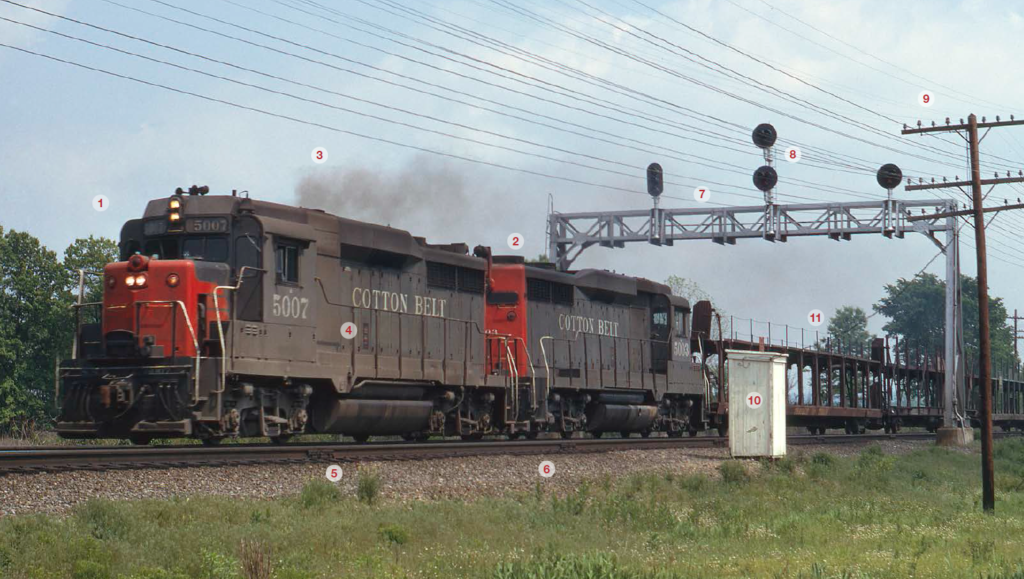
A fast freight rides a two-railroad speedway in May 1971. Jerry A. Pinkepank 1 Cotton Belt freight. A St. Louis Southwestern Railway (SSW, common nickname Cotton Belt) freight rolls north on Missouri Pacific tracks May 8, 1971, at Gorham, Ill., on the 123.7 miles of MoPac trackage rights Cotton Belt used to reach the Illinois […]
Read More…
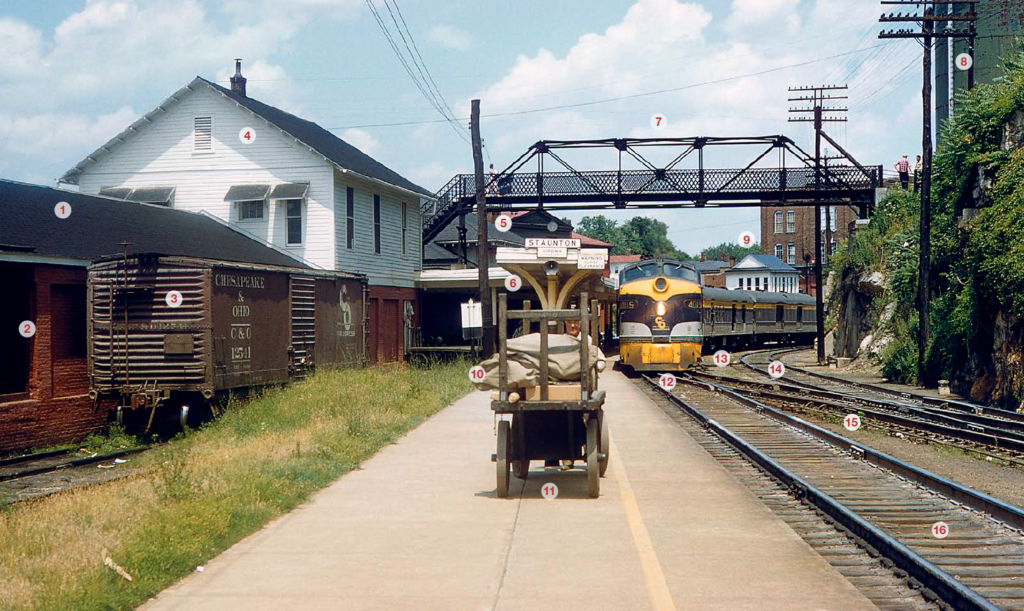
A single photo from the 1950s of C&O’s ‘Sportsman’ at a small-city station at Staunton, Va., reveals plenty of small, easily overlooked details. 1 – Freight house Staunton (“Stan-ton”) in 1950 had a population of 19,927. All towns of this significance once had a freight house where less-than-carload (LCL) freight was handled. Warehousemen used a […]
Read More…
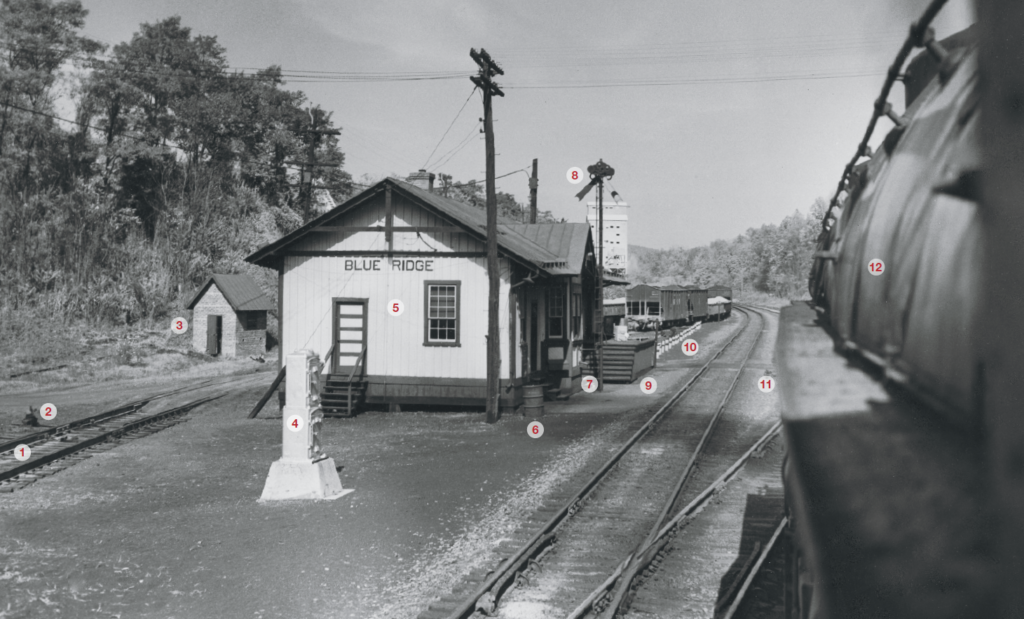
1 Split-point derail device. Considered more effective than a lifting-block derail when there is extra risk of cars rolling out onto the main line from a “house track” or “back track” (terms for station trackage other than a passing siding), or from an industry track, especially when there is a descending grade toward the switch, […]
Read More…
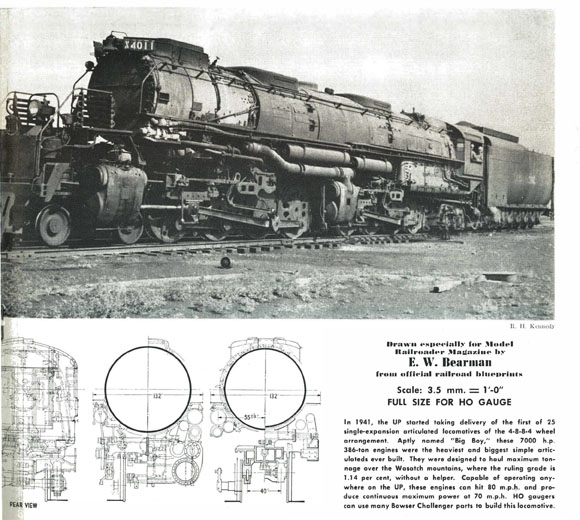
Click on the image or link to download a PDF of this drawing of the Union Pacific Big Boy In 1941 the Union Pacific RR took delivery of its first 4-8-8-4 single-expansion articulated steam locomotives. Aptly named “Big Boy,” these 7,000 hp, 386-ton locomotives were the heaviest and among the most powerful simple articulateds ever […]
Read More…
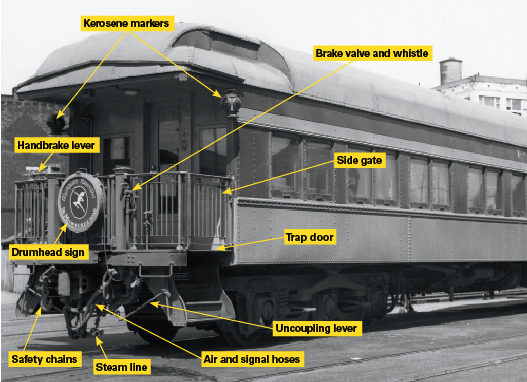
Passenger car end details were pretty standard and most followed the pattern used on sleeping cars built by the Pullman Co. The car in the photo is Crystal Point, a Pullman 3-compartment, 2-drawing-room, observation lounge assigned to the Milwaukee Road’s Olympian Hiawatha in 1947. A number of details are visible that appear on most cars […]
Read More…
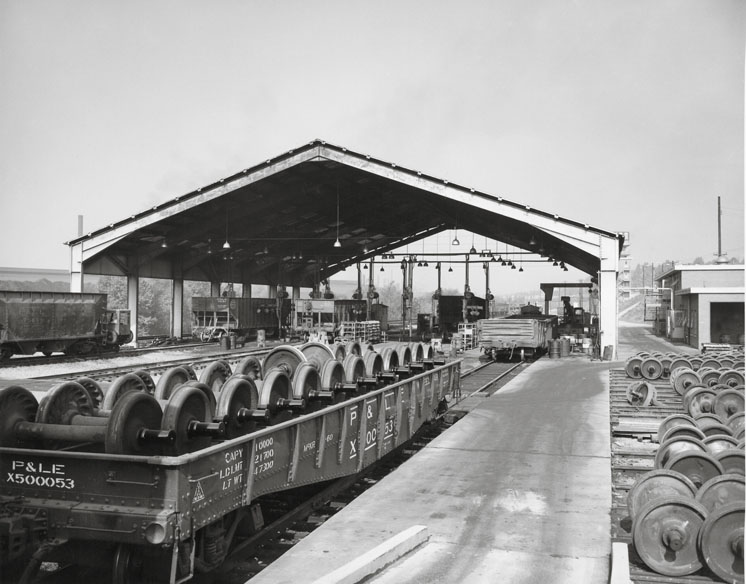
Railroad equipment sustains a great deal of wear and tear as the freight cars travel about the country. For this reason, all cars receive careful attention from car inspectors anytime they move through a yard or terminal. Car inspectors are trained to look for anything that’s wrong with a freight car, from damaged safety appliances […]
Read More…
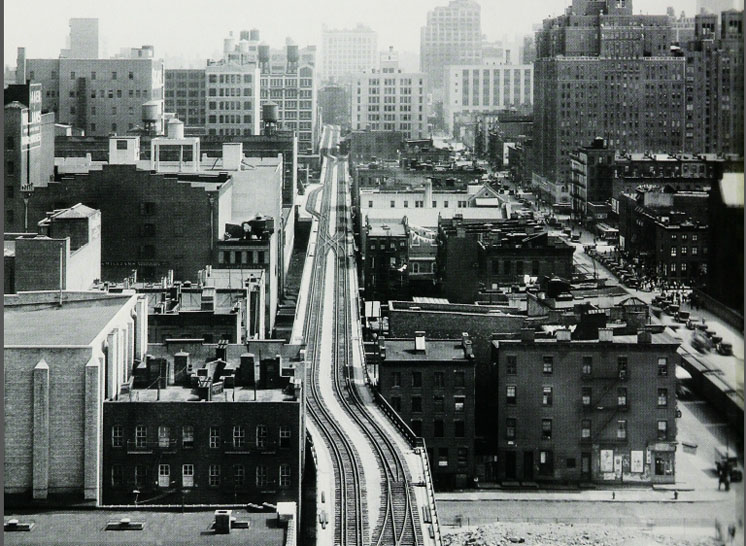
Long stretches of elevated main line gave the New York Central RR’s 30th Street Branch its High Line nickname. New York Central RR’s 30th Street Branch was known as the High Line because of its long stretch of elevated mainline track. Learn all about this interesting prototype railroad in the article below originally published in […]
Read More…
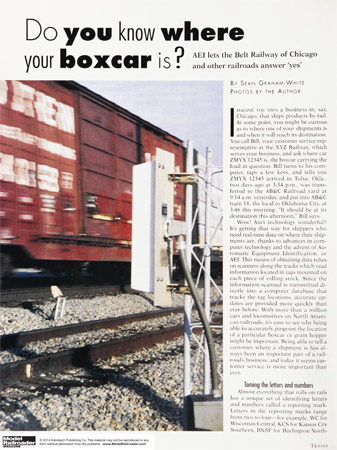
In the December 2014 Model Railroader, Seth Neumann and Chris Drone wrote an article about using radio-frequency identification (RFID) and a computer to track rolling stock and new possibilities for operation. Prototype railroads have been using scanning technology since the late 1960s. Automatic Car Identification (ACI) used an optical reader and a color-coded plate to […]
Read More…
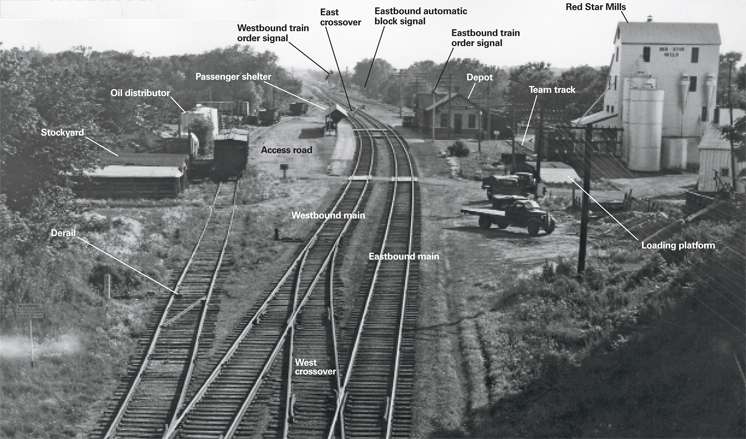
For many years small towns were a major source of traffic for railroads all across the country. Long before anyone ever heard of freeways, the railroads moved all sorts of carload and less-than-carload lot (LCL) freight that kept the local businesses and nearby agricultural economy going. A local station agent-operator was the railroad’s representative who […]
Read More…
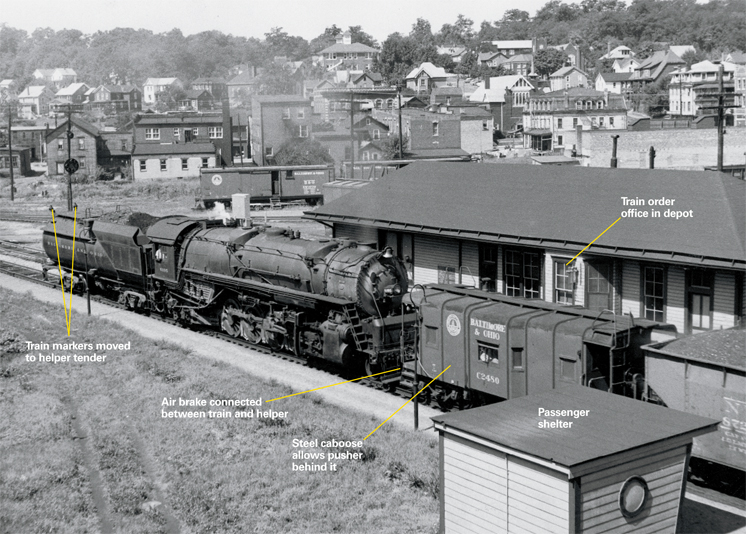
Helper operations were carefully coordinated using locomotive whistle signals as specified in the railroad’s operating rules: (an “o” denotes a short sound, while a dash – indicates a longer whistle blast). The lead engineer handled the train’s air brake while each helper engineer had an independent brake for just his engine. Two long blasts on […]
Read More…

Head-end traffic helped cover some of the costs of America’s passenger trains for many years. Contracts with the United States Postal Service covered the transportation of mail, while the Railway Express Agency (REA) provided a nation- wide package delivery service. Small-to-medium-sized railroads forwarded most of the mail in Railway Post Office (RPO) cars and packages […]
Read More…
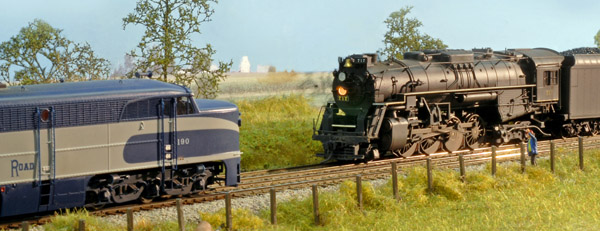
1950: Dieselization – Ten Class 1 railroads had already dieselized before this year, including the Atlanta & St. Andrews Bay; Chicago, Indianapolis & Louisville (Monon); Columbus & Greenville; Detroit & Mackinac; Elgin, Joliet & Eastern; Gulf, Mobile & Ohio; Lehigh & New England; New York, Ontario & Western; New York, Susquehanna & Western; and Texas-Mexican. […]
Read More…












